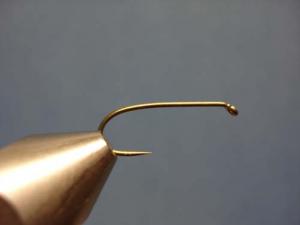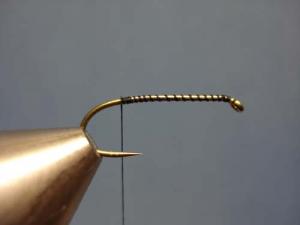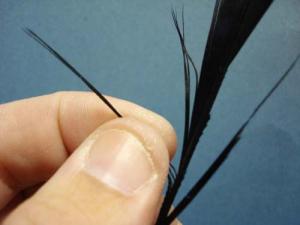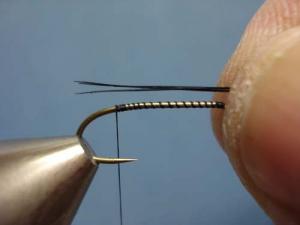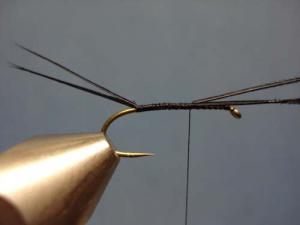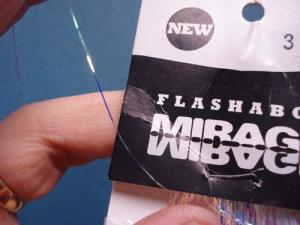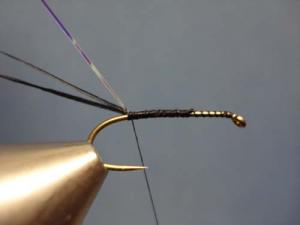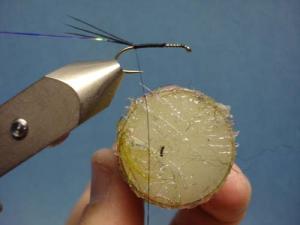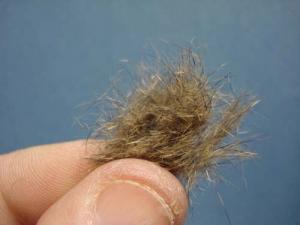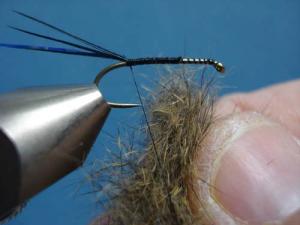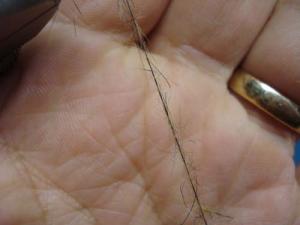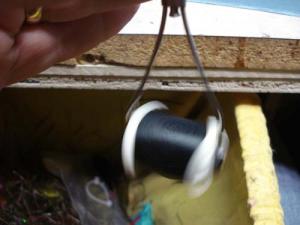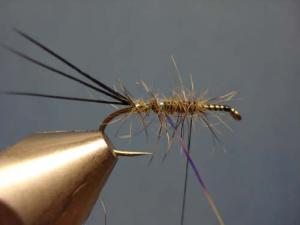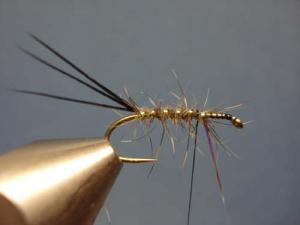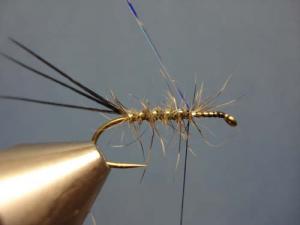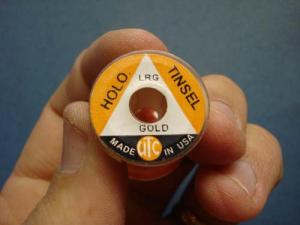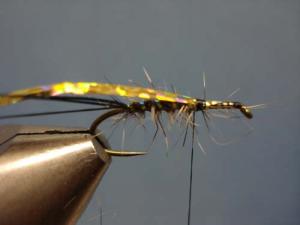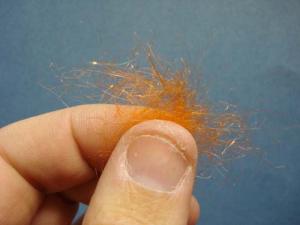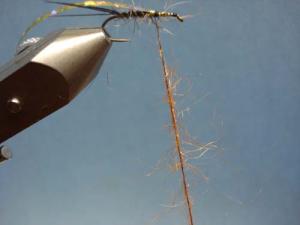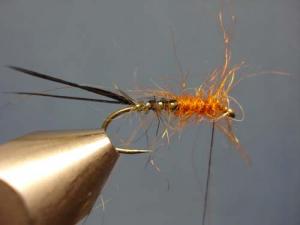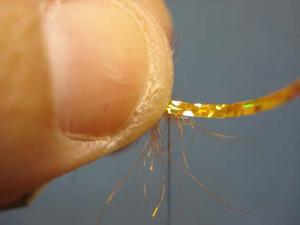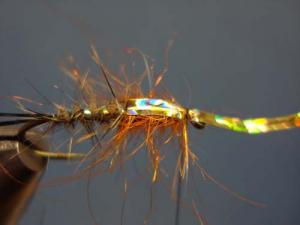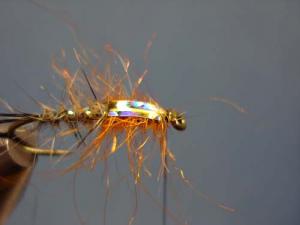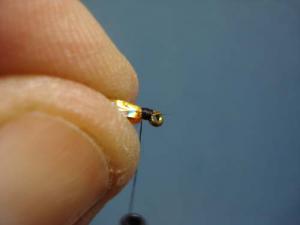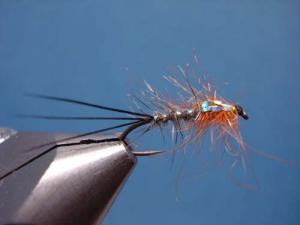Loren's hare's Ear
Fly and Photos by Loren Williams
The name of this pattern, "Loren's Hare's Ear," is a misnomer since the pattern does not contain as much as a fiber of bunny pelt. But, since this is the name it was given, and has stuck, it will be the published name. The name was actually given by one of my Team USA teammates while practicing on the lagoons of Tasmania. It is justified in that the pattern is crudely based on the Gold-Ribbed Hare's Ear family.
The history behind this pattern is a simple one. In the fall of 2005 when I began to get serious about learning how to fly fish stillwaters for trout I was immediately inundated with patterns. Going back to when you began fly-fishing I am sure you can understand. My method of learning was to pick a particular technique and learn it to consistency. At that time of year the trout were rather shallow, feeding well, and my arsenal of lines was skimpy. Therefore, I opted to learn how to fish nymphs on a floating line. My research had indicated that Hare's Ears were a typical fodder for UK stillwater anglers, but that they often took a different appearance than our standard dressingy. Often, the stillwater Hare's Ear was slim, sans wing case, and ribbed with tinsel. Understand that most stillwater food items are slim in nature.
Thus, the "anorexic" hare's ears of the UK stillwater venue were a starting point for me along with various pheasant tail derivatives, diawl bachs, crunchers and the like. As my learning progressed over the next year I found myself not really trusting anorexic hare's ears, yet realizing that our more standard affair was overdressed. Improvisation took hold as I began to dabble with the whole hare's ear scheme.
First, I subbed-out the bunny fur for a far spikier, and tad darker, fox squirrel dubbing which I felt would offer more "oomph!" while maintaining a skinny profile. Next, my new-found confidence in hot spots lead to the addition of a bright thorax. I played with various dubbings and colors and have since settled on orange as my primary color with red a close second. I am still undecided as to the necessity of the actual material as I have had great success with angora, simi seal and various Hends products. That said, I tend now to favor flashy dubbings with long fibers. The holographic tinsel wing case was a late addition, simply a confident way for me to blend the thorax to the abdomen and add some additional attraction. The fly has been fished successfully without the wing case to feel free to omit if needed.
Tested in Tasmania, New Zealand and across the US, this pattern is more than likely on my cast of flies whenever I am working a stillwater, no matter the line or retrieve.
MATERIALS
Hook: 1XL standard wire (#8-#12)
Thread: Black
Tail: 3 Black PT Fibers
Rib: Flashabou Mirage Tinsel
Abdomen: Fox Squirrel Dubbing
Wing case: Holographic Gold Tinsel
Thorax: Orange Seal Dubbing
Click Photos to Enlarge!
